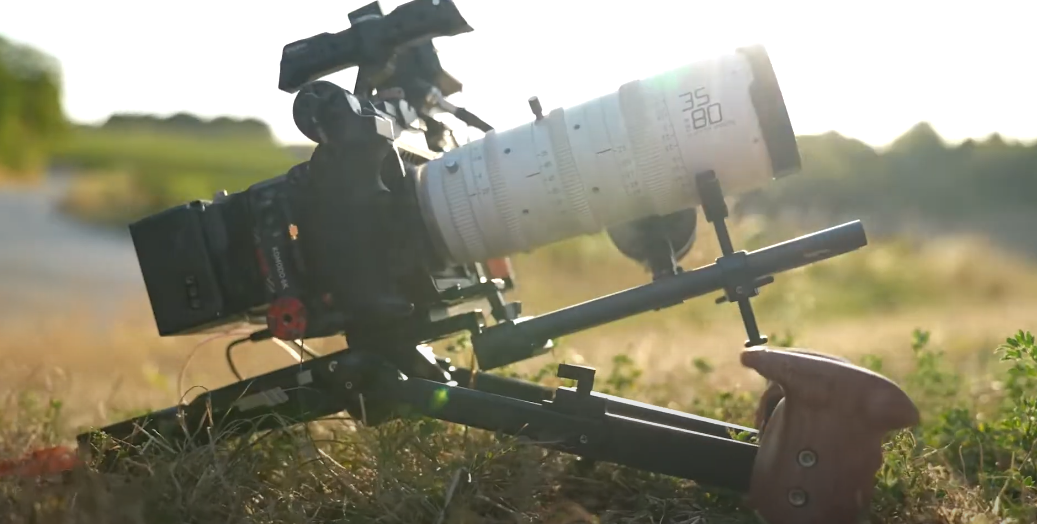2024.7.29
Lens flare is an optical phenomenon in photography and cinematography, characterized by unintended scattered or reflected light within the lens system, typically caused by direct sunlight or strong artificial light sources. Optical elements within the lens, such as coatings, lens elements, and aperture size, play a crucial role in the formation of lens flare. Coatings designed to reduce reflections and enhance contrast may inadvertently contribute to lens flare under certain conditions.
This kind of "unwanted" lens flare often occurs when capturing photos or videos. However, this "unwanted" lens flare is only considered so when it happens unintentionally. Otherwise, artists frequently manipulate scenes, lighting, and lens elements intentionally to achieve desired lens flare effects, whether for aesthetic or functional purposes. These flares often appear as bright, geometric streaks or circles, imparting a unique and sometimes pleasing quality to the photograph. Though initially seen as a flaw, many photographers now deliberately incorporate lens flare into their work to create a warm, atmospheric, or dreamy effect.
Lens flare can also appear in various types and effects within the frame, including:
1.Ghosting
Ghosting typically manifests as circular or ring-shaped lens flares emanating from the primary light source, often exhibiting colors such as green or blue depending on the lens coatings. Unlike the starburst effect discussed next, this phenomenon can occur frequently in frames without requiring specific lens adjustments, shooting conditions, or camera settings. The direct cause is reflection of light. When a strong light source is positioned in front of or at an angle to the lens, lens elements reflect the light. The camera captures these reflections, resulting in noticeable ghosting in the photograph. The use of anti-reflective (AR) coatings can mitigate ghosting effects. Another possible scenario is when highly reflective objects bounce light into the lens.
The number of lens elements, coatings, aperture size, and focal length all influence this phenomenon, determining the shape and color of lens flare. For instance, telephoto lenses are more prone to producing lens flare than wide-angle lenses. A larger aperture allows more light into the lens, increasing the likelihood of lens flare. Poor quality lens coatings can also contribute to lens flare. The more lens elements there are, the greater the reflective surfaces, which can enhance lens flare. Dust, dirt, and smudges on the lens may also reflect light, causing lens flare by making the lens dirty.

A Journey into Documentary Film making with DZOFILM VESPID RETRO PRIMES,2024
2.Starburst
The starburst effect perfectly describes the visual outcome. Photos exhibiting this effect display multi-pointed star patterns around light sources. The length and intensity of the points vary. The name 'starburst' originates from the shape it produces. To achieve a starburst effect, a useful method is to observe shadows on the ground. If the shadows are sharp and distinct, it indicates strong direct sunlight, increasing the likelihood of producing a starburst effect. Photographers may then reduce the aperture to allow less light onto the sensor. This results in smaller yet sharper starbursts, as opposed to larger and 'softer' circular bokeh seen in out-of-focus areas.

“The Herbalist”丨Shot on DZOFILM Catta Zoom & Vespid Prime, 2023
- Veiling flare
Veiling flare typically appears outside or around the main light source, resembling a thin layer of white haze covering the image, hence its name "Veiling." When light shines onto the lens, it leaves a halo across the entire frame. Veiling flare, caused by reflections between lens surfaces and within the lens barrel, reduces contrast in shadow areas and can blur the image. This is also the scenario where "ghosting" occurs, compromising image quality when strong light sources are present or near the shooting scene. Thus, veiling flare and ghosting can sometimes occur together. Veiling flare is present in all optical systems, including the human eye. It is also a significant limiting factor in the dynamic range of cameras, especially when using High Dynamic Range (HDR) sensors with dynamic ranges up to 120dB or higher
In terms of lens design, controlling veiling glare can be achieved by using high-quality lens coatings, with multi-coating being most effective. Multi-coating effectively reduces reflections between lens surfaces.

Porsche Commercial丨DZOFILM CATTA ZOOM, 2023
- Anamorphic Lens Flare
Widely used in cinematic photography, anamorphic lens flares are among the most challenging to naturally replicate. This is because you need to use an anamorphic lens to reproduce them. Typically, they appear as horizontal streaks of light, strongest in the middle and tapering off in saturation towards the edges on both sides. The intensity of anamorphic lens flares increases with higher compression ratios of the anamorphic lens.
Anamorphic widescreen lenses consist of cylindrical lens components, in addition to the lens elements typical of fixed-focus lenses, usually comprising at least two groups of two lenses, sometimes with more lens elements and components. Increasing the number of lens elements results in more lens flares, ghosting, and veiling glare. These phenomena can occur both in front of and behind the anamorphic lens components. Overall, the distinctive structure of anamorphic widescreen lenses imparts a unique visual quality to images, including pronounced streaking effects, which are characteristic features of anamorphic lenses.

Pavo Anamorphic Demo Video, 2024
Not all directors and cinematographers appreciate lens flare effects and the sources that produce them. Depending on the shooting style and content requirements, there may be a preference for clean frames without lens flare or a need to completely avoid it. There are several methods to eliminate unwanted lens flare. You can use lens hoods to block extra light or adjust the shooting angle to reduce the impact of direct light sources, thereby minimizing lens flare effects as much as possible.
Reference materials:
https://www.youtube.com/watch?v=OaHVdA8KLtw
https://borisfx.com/blog/lens-flare-complete-tutorial-for-photography/
